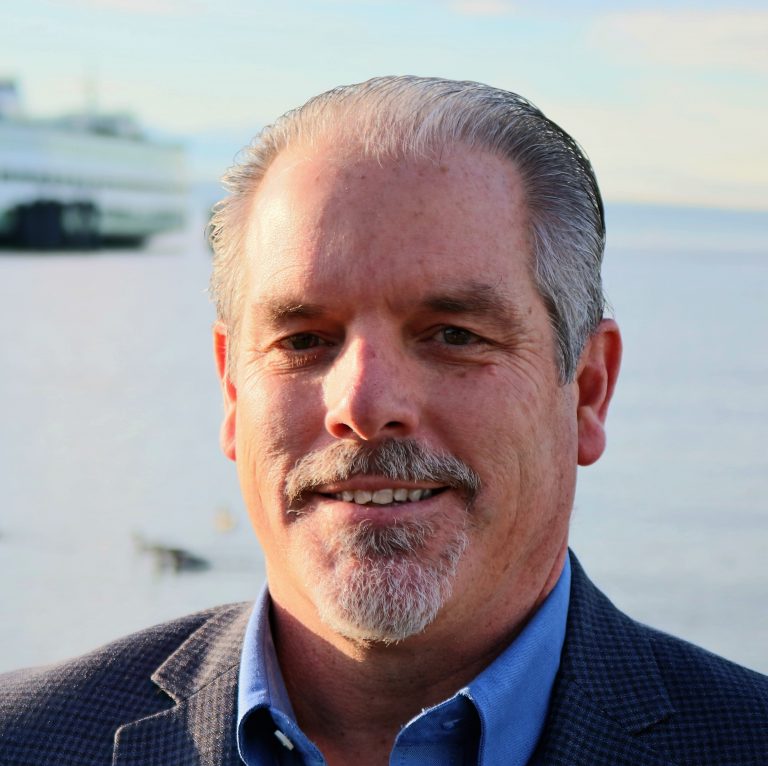- CD251: BIF: Driving Dangers Sustained Jennifer Briney 1:20:59
The recently signed infrastructure law continues the United States’ over-reliance on the most dangerous way to travel: driving a vehicle. Did Congress make sufficient safety improvements to decrease the dangers posed by driving in the United States? This episode will examine all vehicle-related safety provisions to help you weigh your own transportation options. Please Support Congressional Dish – Quick Links
- Contribute monthly or a lump sum via PayPal
- Support Congressional Dish via Patreon (donations per episode)
- Send Zelle payments to: Donation@congressionaldish.com
- Send Venmo payments to: @Jennifer-Briney
- Send Cash App payments to: $CongressionalDish or Donation@congressionaldish.com
- Use your bank’s online bill pay function to mail contributions to: 5753 Hwy 85 North, Number 4576, Crestview, FL 32536.
Please make checks payable to Congressional Dish
Thank you for supporting truly independent media!
Background Sources Recommended Congressional Dish Episodes
CD246: BIF: Appalachian Chemical Storage
CD247: BIF: The Growth of US Railroads
CD240: BIF: The Infrastructure BILL
CD021: Trailblazer vs. ThinThread
Why You Should Be Afraid of Cars
“Number of worldwide air traffic fatalities from 2006 to 2021.” Apr 12, 2022. Statista.
National Highway Traffic Safety Administration. Mar 2022. “Overview of Motor Vehicle Crashes in 2020.” U.S. Department of Transportation.
“Number of deaths / injuries directly linked to boating accidents in the U.S. from 2002 to 2020.” Jun 2021. Statista.
Injury Facts. “Railroad Deaths and Injuries.” National Safety Council.
Jon Ziomek. Sept 28, 2020. “Disaster on Tenerife: History’s Worst Airline Accident.” Historynet.
National Highway Traffic Safety Administration. “Distracted Driving.” U.S. Department of Transportation.
Problems the Law Does (and Does Not) Address
Jake Blumgart. Nov 15, 2021. “The Infrastructure Bill May Not Be So Historic After All.” Governing.
Self Driving Cars
Neal E. Boudette. May 3, 2022. “Paying customers could hail driverless taxis in San Francisco later this year.” San Francisco Examiner.
Natasha Yee. Apr 1, 2022. “Waymo Bringing Driverless Vehicles to Downtown Phoenix … Soon.” Phoenix New Times.
“24 Self-Driving Car Statistics & Facts.” Feb 20, 2022. Carsurance.
Neal E. Boudette. Jul 5, 2021. “Tesla Says Autopilot Makes Its Cars Safer. Crash Victims Say It Kills.” The New York Times.
Clifford Law Offices PC. May 5, 2021. “The Dangers of Driverless Cars.” The National Law Review.
Katie Shepherd and Faiz Siddiqui. Apr. 19, 2021. “A driverless Tesla crashed and burned for four hours, police said, killing two passengers in Texas.” The Washington Post.
Riley Beggin. Jan 15, 2021. “Self-Driving Vehicles Allowed to Skip Some Crash Safety Rules.” Government Technology.
Faiz Siddiqui. Oct 22, 2020. “Tesla is putting ‘self-driving’ in the hands of drivers amid criticism the tech is not ready.” The Washington Post.
Niraj Chokshi. Feb 25, 2020. “Tesla Autopilot System Found Probably at Fault in 2018 Crash.” The New York Times.
Michael Laris. Feb 11, 2020. “Tesla running on ‘Autopilot’ repeatedly veered toward the spot where Apple engineer later crashed and died, federal investigators say.” The Washington Post.
Alex Davies. May 16, 2019. “Tesla’s Latest Autopilot Death Looks Just Like a Prior Crash.” Wired.
Neal E. Boudette and Bill Vlasic. Sept 12, 2017. “Tesla Self-Driving System Faulted by Safety Agency in Crash.” The New York Times.
Rachel Abrams and Annalyn Kurtz. Jul 1, 2016. “Joshua Brown, Who Died in Self-Driving Accident, Tested Limits of His Tesla.” The New York Times.
Alcohol Detection Systems
Isaac Serna-Diez. Nov 23, 2021. “Alcohol Detection Systems Will Now Be Mandatory In All New Cars To Prevent Drunk Driving. YourTango.
Keyless Entry Carbon Monoxide Deaths
“Toyota Introduces Automatic Engine Shut Off to Prevent Carbon Monoxide Deaths.” Jun 20, 2019. Kelley Uustal Trial Attorneys.
“Toyota Has the Most Keyless Ignition Related Deaths, But Takes no Action.” Jun 7, 2019. KidsAndCars.org.
Kids Left in Cars
Morgan Hines. Aug 2, 2019. “There’s science behind why parents leave kids in hot cars.” USA Today.
Scottie Andrew and AJ Willingham. July 30, 2019. “More than 38 kids die in hot cars every year, and July is the deadliest month.” CNN.
John Bacon. Jul 28, 2019. “’He will never forgive himself’: Wife defends husband in devastating hot car deaths of twins.” USA Today.
Eric Stafford. May 6, 2019. [“Children Can Die When Left in the Back Seat on a Warm Day—and 800 Already Have. “Children Can Die When Left in the Back Seat on a Warm Day—and 800 Already Have.” Car and Driver.
National Highway Traffic Safety Administration. “Child Heatstroke Prevention: Prevent Hot Car Deaths.” U.S. Department of Transportation.
Motorcycle Helmets
“Motorcycle helmet use laws by state.” May 2022. Insurance Institute for Highway Safety.
“Facts + Statistics: Motorcycle crashes.” Insurance Information Institute. Adam E. M. Eltorai et. al. March 16, 2016. “Federally mandating motorcycle helmets in the United States.” BMC Public Health.
Truck Safety
“How Many Miles Do Semi Trucks Last?” Rechtien.
Non-motorist Safety
“Pedestrian Traffic Fatalities by State: 2020 Preliminary Data.” Governors Highway Safety Association.
“Pedestrian Traffic Fatalities by State: 2020 Preliminary Data.” [Full Report] March 2021. Governors Highway Safety Association.
John Wenzel. Jan 6, 2020. “Bollard Installation Cost.” Saint Paul Sign & Bollard.
Richard Peace. Feb 20, 2019. “Why You Don’t Want a Superfast Electric Bicycle.” Electric Bike Report.
911 System Upgrades
Mark L. Goldstein. January 2018. “Next Generation 911: National 911 Program Could Strengthen Efforts to Assist States” [GAO-18-252]. Government Accountability Office.
National 911 Program. December 2016. “2016 National 911 Progress Report.” U.S. Department of Transportation.
CD021: Trailblazer vs. ThinThread Followup
“Michael Hayden, Principal, Strategic Advisory Services.” The Chertoff Group.
“Board of Directors.” Atlantic Council.
Tim Shorrock. Apr 15 2013. “Obama’s Crackdown on Whistleblowers.” The Nation.
The Law H.R.3684 – Infrastructure Investment and Jobs Act
Law Outline
DIVISION A: SURFACE TRANSPORTATION
TITLE I – FEDERAL-AID HIGHWAYS
Subtitle A – Authorizations and Programs
Sec. 11101: Authorization of Appropriations
- Authorizes appropriations for Federal-Aid for highways at between $52 billion and $56 billion per year through fiscal year 2026 (over $273 billion total).
- Authorizes $300 million for “charging and fueling infrastructure grants” for 2022, which increases by $100 million per year (maxing out at $700 million in 2026)
- Authorizes between $25 million and $30 million per year for “community Resilience and evacuation route grants” on top of equal amounts for “at risk coastal infrastructure grants”
- Authorizes a total of $6.53 billion (from two funds) for the bridge investment program
Sec. 11102: Obligation Ceiling
- Caps the annual total funding from all laws (with many exceptions) that can be spent on Federal highway programs.
- Total through 2026: $300.3 billion
Sec. 11111: Highway Safety Improvement Program
- Adds protected bike lanes to the list of projects allowed to be funded by the highway safety improvement project
- Adds “vulnerable road users” (non-motorists) to the list of people who must be protected by highway safety improvement projects
- If 15% or more of a state’s annual crash fatalities are made up of non-motorists, that state will be required to spend at least 15% of its highway safety improvement project money on projects designed to improve safety for non-motorists.
- Each state, by the end of 2023, will have to complete a vulnerable road user safety assessment that includes specific information about each non-motorist fatality and serious injury in the last five years, identifies high-risk locations, and identifies possible projects and strategies for improving safety for non-motorists in those locations.
Sec. 11119: Safe Routes to School
- Creates a new program to improve the ability of children to walk and ride their bikes to school by funding projects including sidewalk improvements, speed reduction improvements, crosswalk improvements, bike parking, and traffic diversions away from schools.
- Up to 30% of the money can be used for public awareness campaigns, media relations, education, and staffing.
- No additional funding is provided. It will be funded with existing funds for “administrative expenses”. Each state will get a minimum of $1 million.
- Non-profit organizations are eligible, along with local governments, to receive and spend the funding. Non-profits are the only entities eligible to receive money for educational programs about safe routes to school.
Sec. 11130: Public Transportation
- Allows the Transportation Secretary to allocate funds for dedicated bus lanes
Sec. 11133: Bicycle Transportation and Pedestrian Walkways
- Adds “shared micromobility” projects (like bike shares) to the list of projects that can be funded as a highway project
- Electric bike-share bikes must stop assisting the rider at a maximum of 28 mph to be classified as an “electric bicycle”
Subtitle B – Planning and Performance
Sec. 11206: Increasing Safe and Accessible Transportation Options.
- Requires each state, in return for funding, to carry out 1 or more project to increase accessible for multiple travel modes. The projects can be…
- The enactment of “complete streets standards” (which ensure the safe and adequate accommodation of all users of the transportation system)
- Connections of bikeways, pedestrian walkways, and public transportation to community centers and neighborhoods
- Increasing public transportation ridership
- Improving safety of bike riders and pedestrians
- Intercity passenger rail
- There’s a way for State’s to get this requirement waived if they already have Complete Streets standards in place
Sec. 11404: Congestion Relief Program
- Creates a grant program, funded at a minimum of $10 million per grant, for projects aimed at reducing highway congestion. Eligible projects include congestion management systems, fees for entering cities, deployment of toll lanes, parking fees, and congestion pricing, operating commuter buses and vans, and carpool encouragement programs.
- Buses, transit, and paratransit vehicles “shall” be allowed to use toll lanes “at a discount rate or without charge”
Sec. 11502: Stopping Threats on Pedestrians
- By the end of 2022, the Secretary of Transportation needs to create a competitive grant pilot program to fund “bollard installation projects”, which are projects that raise concrete or metal posts on a sidewalk next to a road that are designed to slow or stop a motor vehicle.
- The grants will pay for 100% of the project costs
- Appropriates only $5 million per year through 2026
Sec. 11504: Study of Impacts on Roads from Self-driving Vehicles
- By early 2023, the Transportation Department has to conduct a study on the existing and future effects of self-driving cars on infrastructure, mobility, the environment, and safety.
Sec. 11529: Active Transportation Infrastructure Investment Program
- Creates a grant program authorized for $1 billion total that will fund walking and biking infrastructure projects that each cost $15 million or more and connect communities to each other, including communities in different states, and to connect to public transportation.
- The Federal government will pay for 80% of the project costs, except in communities with a poverty rate over 40% (the Federal government will pay 100% of the project costs in impoverished communities).
TITLE III – MOTOR CARRIER SAFETY
Sec. 23010: Automatic Emergency Braking: Automatic Emergency Braking
- A Federal regulation will be created by November 2023 which will require new commercial vehicles to be equipped with automatic braking systems and there will be performance standards for those braking systems.
Sec. 23022: Apprenticeship Pilot Program
- Creates a three year pilot program, capped at 3,000 participants at a time, for people under 21 to be trained by people over the age of 26 to become commercial truck drivers.
- Drivers under the age of 21 are not allowed to transport any passengers or hazardous cargo
Sec. 23023: Limousine Compliance With Federal Safety Standards
- A Federal regulation will be created by November 2023 requiring that limousines have a seat belts at every seating position, including side facing seats.
TITLE IV – HIGHWAY AND MOTOR VEHICLE SAFETY
Subtitle A – Highway Traffic Safety
Sec. 24102: Highway Safety Programs
- Prohibit the Federal Government from withholding highway safety money to the states that refuse to require helmets for motorcycle drivers or passengers who are over the age of 18.
Sec. 24103: Highway Safety Research and Development
- Creates a grant program (by November 2023) that will fund states that want to create a process for notifying vehicle owners about any open recalls on their cars when they register their cars with the DMV.
- The state receiving the money is only required to provide the notifications for two years and participation in general is voluntary.
- Creates financial incentives for states to create laws that prohibit drivers from holding “a personal wireless communications device” while driving, has fines for breaking that law, and has no exemptions for texting when stopped in traffic.
- There are exceptions for using a cell phone for navigation in a “hands-free manner”
- Creates financial incentives for states to create laws that require curriculum in driver’s education courses to include information about law enforcement procedures during traffic stops and the rights and responsibilities of the drivers when being stopped. The states would also have to have training programs for the officers for implementing the procedures that would be explained to drivers.
Sec. 24113: Implementation of GAO Recommendations
- Requires the Secretary of Transportation to implement all of the national-level recommendations outlined in a 2018 GAO report by the end of November 2022.
Sec. 24201: Authorization of Appropriations
- Authorizes a little over $1 billion total for vehicle safety programs from 2022 through 2026
- By November 2023, the Transportation Department will have to issue a regulation requiring fossil fuel powered vehicles with keyless ignitions to have an automatic shutoff system to prevent carbon monoxide poisoning.
- The amount of time that must trigger the shut off will be determined by the regulators.
- If the regulation is issued on time, this would go into effect most likely on September 1, 2024.
Sec. 24208: Crash Avoidance Technology
- The Secretary of Transportation must issue a regulation establishing minimum standards for crash avoidance technology that must be included in all vehicles sold in the United States starting on a date that will be chosen by the Secretary of Transportation.
- The technology must alert the driver of an imminent crash and apply the breaks automatically if the driver doesn’t do so.
- The technology must include a land departure system that warns the driver that they are not in their lane and correct the course of travel if the driver doesn’t do so.
Sec. 24215: Emergency Medical Services and 9-1-1
- Repeals the part of the law that required the Transportation Department to publish criteria that established timelines and performance requirements for anyone who got a grant to implement the Next Generation 9-1-1 project.
Sec. 24220: Advanced Impaired Driving Technology
- By November 2024, the Secretary of Transportation will have to finish a regulation that requires passenger motor vehicles to be standard equipped with “advanced and impaired driving prevention technology”
- The technology must be able to monitor the performance of a driver and/or their blood alcohol level and be able to prevent or limit the car’s operation if impairment is detected or if the blood alcohol is above the legal limit.
- This will apply to new cars sold after November 2030 at the latest.
- By November 2023, the Secretary of Transportation must finish a regulation requiring all new passenger vehicles to have a system alerting the driver visually and audibly to check the back seat when the car is turned off.
- Says it will be activated “when the vehicle motor is deactivated by the operator”
Hearings The Road Ahead for Automated Vehicles
House Committee on Transportation and Infrastructure, Subcommittee on Highways and Transit February 2, 2022
Overview: The purpose of this hearing is for Members of the Subcommittee to explore the impact of automated vehicle deployment, including automated trucks and buses, on mobility, infrastructure, safety, workforce, and other economic and societal implications or benefits.
Cover Art
Design by Only Child Imaginations
Music Presented in This Episode
Intro & Exit: Tired of Being Lied To by David Ippolito (found on Music Alley by mevio)































Already a Member? Login Here.
Not Yet a Member? Join the Conversation Today!